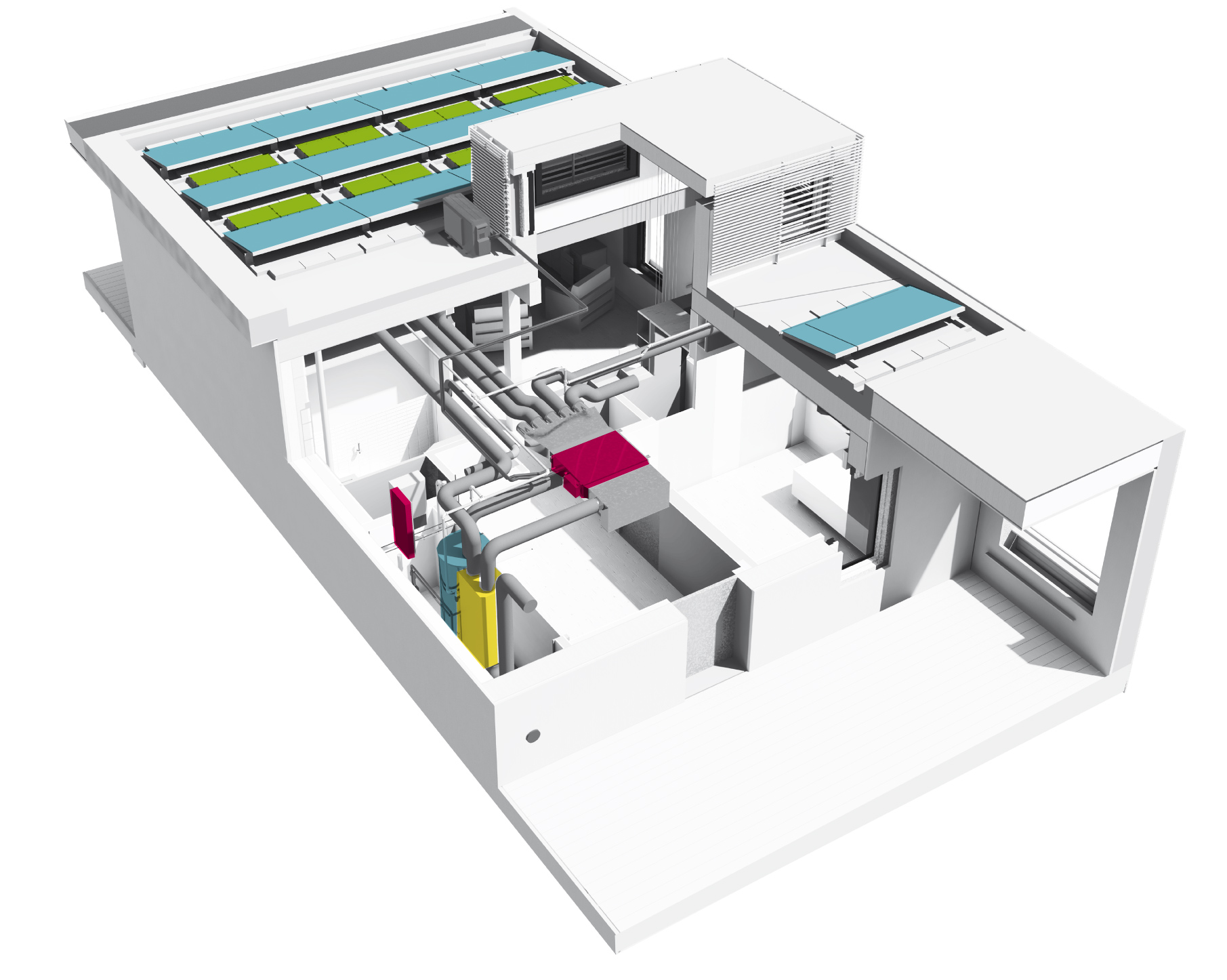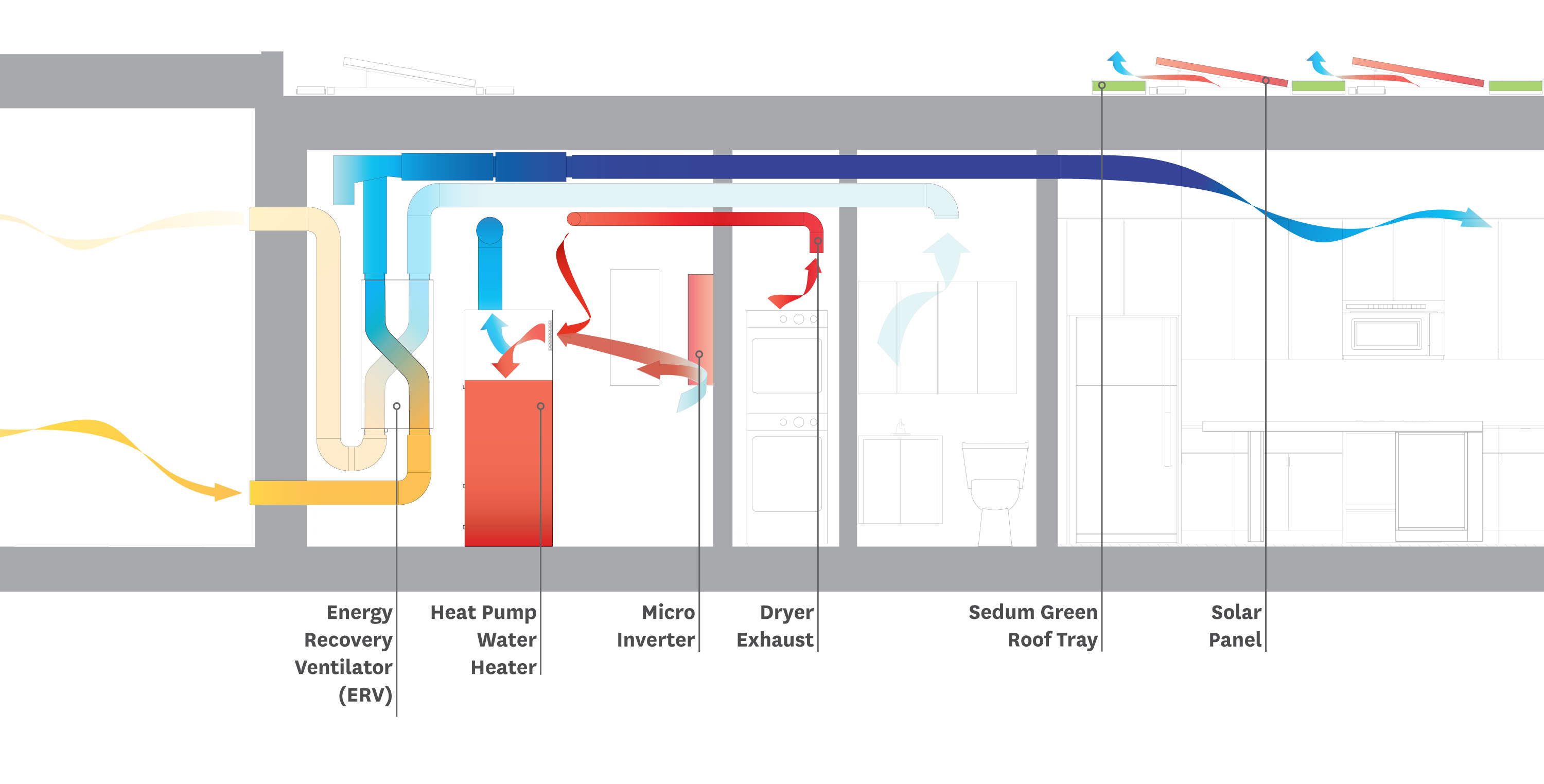Active Systems

A rendering of the Systems Inside the Empowerhouse
Empowerhouse is a site net-zero energy home, efficiently producing as much electricity as it uses in a year. A 4.2 kW solar array produces all of the energy to heat and cool the home, power the lighting,
and run the hot water heater and electric appliances, eliminating electricity bills for the Deanwood family. Empowerhouse uses conventional, market available, components in a synergetic relationship, maximizing their efficiency.

Diagram illustrating the House’s ERV System
SYNERGETIC SYSTEM
The mechanical components work synergistically. Fresh, preconditioned air flows from the ventilator directly into the air handler. The water heater recovers heat from the exhaust of the condensing dryer. As air passes through a transfer duct, excess heat is removed from the inverter. Cool, dehumidified air is exhausted from the water heater where it is pulled into the return and redistributed, reducing cooling loads.
Wireless switches control high efficiency light sources. A simple, scalable network of controls encourages the efficient operation of the house. As opposed to a typical “smart home” control system, which anticipates and encourages the homeowner’s needs, this system empowers a “smart homeowner” by providing real time energy monitoring and feedback, enabling the occupants to better understand their patterns of usage.
LIGHTING STRATEGY
The stair loft brings light deep into the center of the home. Interior window trim is splayed to maximize views and daylight; and reduce glare, contrast, and the apparent thickness of the walls.
General artificial lighting is provided by low cost, high efficiency linear fluorescents and LED light sources that reflect off of the vertical and horizontal surfaces of the house, while focused activities are addressed with additional task lighting. These systems complement each other to create a rich and varied living environment.
SENSORS AND CONTROLS
To maximize efficiency, the lighting strategy integrates occupancy and daylight sensors. The web-based control system visualizes and displays energy consumption, informing the occupants about their use of active systems.
WIRELESS SWITCHES
Many of the switches and sensors require no wiring or batteries; communicating information using available energy harvested at their location through mechanical operation, photosensitivity or ambient heat.

Become a fan on
Follow us on
Copyright © 2011 • All Rights Reserved • Parsons NS Stevens + Solar Decathlon 2011